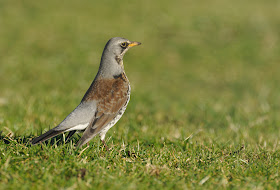This handsome drake Ring-necked Duck was originally found at Stithians reservoir by Brian Mellow. It then relocated itself at St Gothians on Wed 26th Jan (CCBarnard). This ever improving site has proved popular with ducks during this winter: 26 Gadwall, 8 Shoveler, Pintail, Wigeon, Teal, Goldeneye, Smew, Goosander, Scaup, Pochard, 84 Tufted Duck and of course the Ring-necked Duck.
Ring-necked Duck breeding habitat is wooded lakes in the northern United States and Canada. They overwinter in southern North America, usually in lakes, ponds, rivers or bays.
Ring-necked Duck is a rare but annual vagrant to Cornwall. There are approximately 60 records. Ten birds appeared in 2006 alone.

























































